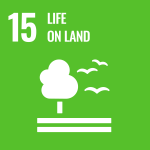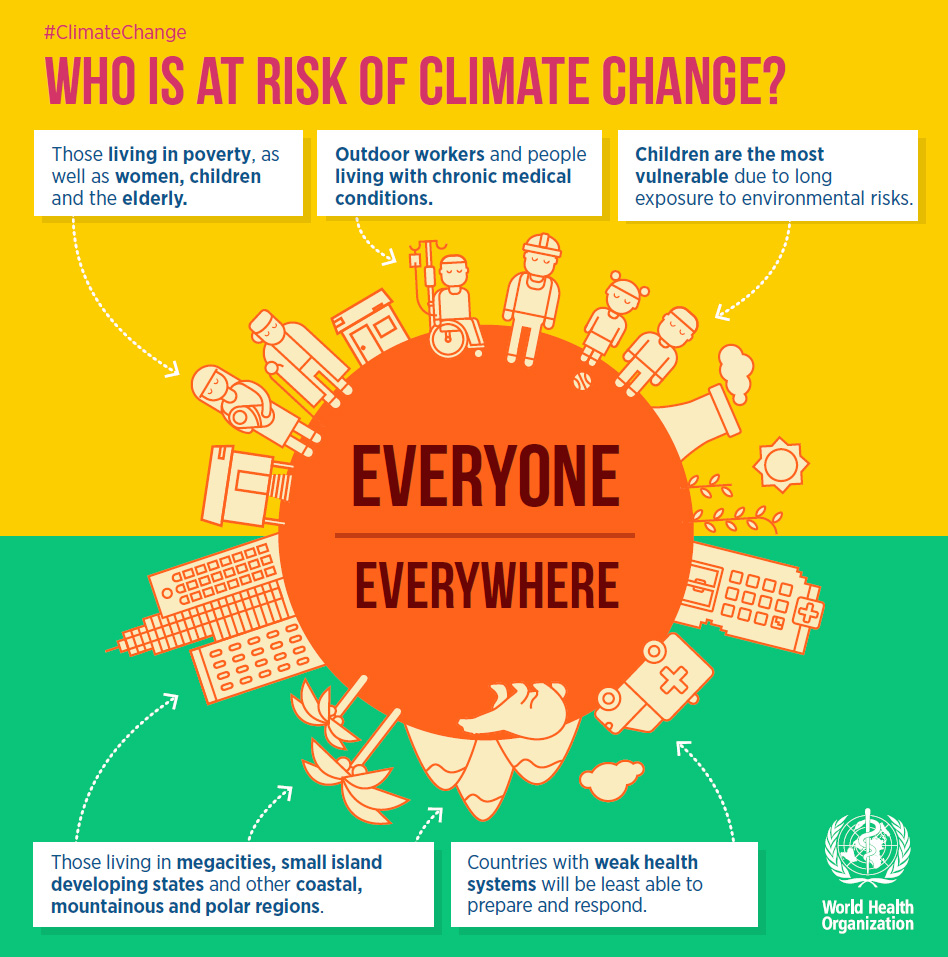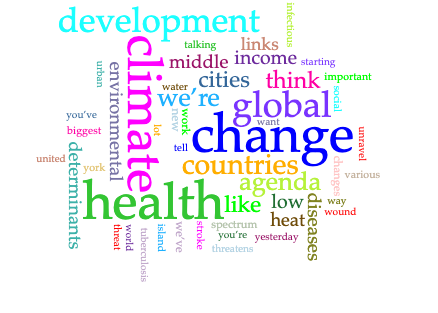Unit 15 Climate: SDG15
Life on Land

Goal no. 15 of the 2030 Agenda for Sustainable Development aims to protect, restore and promote sustainable use of terrestrial ecosystems, sustainably manage forests, combat desertification, and halt and reverse land degradation and halt biodiversity loss.
Click on the arrows to reveal more information about SDG15. You don’t need to remember everything you read – the main thing is to get an overview of this Goal.
Information and targets reproduced under the terms and conditions of United Nations websites. Copyright (2023).
A reminder that links in this e-book do not open in a new tab. If you click on any link to a webpage, click the back button in your browser to return here.
Key vocabulary
Check that you know the meaning and the whole word family of these key words before you begin the Unit. (NB there may be other versions of the word forms – these are the common forms in the context of SDG 15). Also notice some common collocations in bold in the ‘Why this goal? and ‘Targets’ sections above. Add any new words, word families or collocations that you would like to remember to your vocabulary book.
Verb Noun Noun person Adjective
. biodiversity biodiverse
To combat combat combatant combative
To rely on reliability/reliance reliable/reliant (on)
To degrade degradation degraded
To conserve conservation conservationist conserved
Introduction
In Unit 10 you learned about the way climate change is affecting buildings and cities. In this Unit you’ll learn about the way climate change is affecting all life on earth, and establish links between climate and health.
Climate change has serious impacts on population health. An increase in global temperature impacts:
- the frequency and intensity of weather events
- food availability and nutrition
- infection rates
- the quality and safety of air and water
- mental health
In your local context…
Are any these effects of climate change noticeable?
Data Visualisation – Who Is at Risk of Climate Change?
As the infographic states, climate change affects everyone, everywhere. It highlights particular groups, however. (Click here to see the infographic full screen).
Read the infographic and use the information there, plus information you’ve gained in previous Units of Develop Your English to decide what risks the following groups might face from climate change:
- Those living in poverty.
- Outdoor workers.
- Children.
- Those living in cities, small island developing states, coastal, mountainous and polar regions.
- Countries with weak health systems.

Listening – Links between climate and health (3 mins)
![]()
Credit: The Conversation ‘Health Beyond the Horizon’ podcast, Associate Professor, Melbourne School of Population and Global Health, The University of Melbourne, Australia. Licence: CC BY NC ND

Before you listen
Look at the word cloud created from the transcript. The most frequently used words (the biggest ones in the cloud) are health (12), climate (11), change (11), global (7), development (6), countries (5). With the title in mind (‘Links between climate and health’) create a sentence that uses as many of these words as possible and predicts the main point of the listening.

Listen for specific information
Play the audio here:
(Or access The Conversation podcast and listen from 0.20mins to 3mins).
Download the transcript here: Unit 15 Listening Transcript
Function – Establishing links
In Unit 14 you learned ways to talk about causality. In the listening you heard Nick Watts establish links between climate (X) and health (Y). However, this time not all of the links are causal. Some describe the link between two things without saying that one is the cause of the other.
Focus on ways to establish links
3 structures from the listening that describe the link between 2 things without demonstrating causality:
- There are links between X and Y
- X interacts with Y
- There are links from X to Y
2 structures that Watts uses which do demonstrate causality:
- X causes Y (definite)
- X has the potential to cause Y (less definite)
Practice
1.
2. Use your notes from the listening to complete these sentences showing links between climate change and health:
- Changes in environmental patterns cause…
- Climate change has the potential to cause…
- There are links between changes in environmental patterns and…
- Climate change could…
- Climate change threatens…
Vocabulary – Contronyms
As you know, many words in English have more than one meaning. A contronym is a word that has two meanings and the two meanings are the opposite of each other. For example, the verb ‘to weather’ is a contronym as it means both to withstand and to wear away:
- She was able to successfully weather a difficult period at work (to withstand or to combat).
- The constant movement of the waves has weathered the rocks along the shoreline (to wear away or to erode).
Here are some more contronyms that you might want to add to your vocabulary book:
Focus on contronyms (a word with 2 opposite meanings)
Weather (vb.) to withstand something or to wear away.
- She was able to successfully weather a difficult period at work (to withstand or to combat).
- The constant movement of the waves has weathered the rocks along the shoreline (to wear away or to erode).
Apology (n.) a statement of contrition for an action or a defence of an action.
- He offered her an apology for his mistake.
- The book is an apology for capitalism.
Bolt (vb.) to secure something or to run away from something.
- Before going to bed she locked and bolted the door.
- The horse was frightened by the noise and bolted out of the stable.
Bound (vb.) heading to a destination or restrained from movement.
- The aeroplane was bound for America.
- The security guard was bound by the ankles during the robbery.
Dust (vb.) to add fine particles or to remove fine particles.
- The storm dusted every surface with a fine layer of sand.
- He stood up and dusted the sand from his knees.
Fast (adj.) quick or stuck.
- She is a fast runner.
- The car was stuck fast in the mud.
Left (vb.) remained or departed.
- He was the only person left in the building after the class.
- At the end of the class, she left and walked home.
Peer (n. person) a member of the nobility or an equal.
- He has a high social position and is a hereditary peer.
- Teenagers are often strongly influenced by their peers.
Sanction (n.) approval or a boycott.
- They tried to get official sanction for the plans.
- While the war is going on, many countries have imposed economic sanctions and refuse to trade with the aggressor.
Practice
If you are studying in a classroom, work in pairs and tell your partner your sentences. They should guess which meaning (1 or 2) it exemplifies.
Reading – Climate Change is Affecting all Life on Earth – and That’s Not Good News for Humanity
Before you read – predict
The text offers several examples of the way climate change is affecting species, including the fact that some butterflies are changing colour, and salamanders and cold-water fish are shrinking in size. Can you think of any reasons why this is happening?
Skim read
Skim read paragraph 3 (max 1 min) and see if your predictions were accurate.
Read for detail
Read the text carefully (max 10 mins) and make notes. Click on the headings on the left-hand side to access each section and make notes in the text box. When you have finished, download your notes to your own computer.
Climate change is affecting all life on earth – and that’s not good news for humanity

More than a dozen authors from different universities and nongovernmental organisations around the world have concluded, based on an analysis of hundreds of studies, that almost every aspect of life on Earth has been affected by climate change.
In more scientific parlance, we found in a paper published in Science that genes, species and ecosystems now show clear signs of impact. These responses to climate change include species’ genome (genetics), their shapes, colours and sizes (morphology), their abundance, where they live and how they interact with each other (distribution). The influence of climate change can now be detected on the smallest, most cryptic processes all the way up to entire communities and ecosystems.
Some species are already beginning to adapt. The colour of some animals, such as butterflies, is changing because dark-coloured butterflies heat up faster than light-coloured butterflies, which have an edge in warmer temperatures. Salamanders in eastern North America and cold-water fish are shrinking in size because being small is more favourable when it is hot than when it is cold. In fact, there are now dozens of examples globally of cold-loving species contracting and warm-loving species expanding their ranges in response to changes in climate.
All of these changes may seem small, even trivial, but when every species is affected in different ways these changes add up quickly and entire ecosystem collapse is possible. This is not theoretical: Scientists have observed that the cold-loving kelp forests of southern Australia, Japan and the northwest coast of the U.S. have not only collapsed from warming but their reestablishment has been halted by replacement species better adapted to warmer waters.
Flood of insights from ancient flea eggs
Researchers are using many techniques, including one called resurrection ecology, to understand how species are responding to changes in climate by comparing the past to current traits of species. And a small and seemingly insignificant organism is leading the way.
One hundred years ago, a water flea (genus Daphnia), a small creature the size of a pencil tip, swam in a cold lake of the upper north-eastern U.S. looking for a mate. This small female crustacean later laid a dozen or so eggs in hopes of doing what Mother Nature intended – that she reproduce.
Her eggs are unusual in that they have a tough, hardened coat that protects them from lethal conditions such as extreme cold and droughts. These eggs have evolved to remain viable for extraordinary periods of time and so they lay on the bottom of the lake awaiting the perfect conditions to hatch.
Now fast forward a century: A researcher interested in climate change has dug up these eggs, now buried under layers of sediment that accumulated over the many years. She takes them to her lab and amazingly, they hatch, allowing her to show one thing: that individuals from the past are of a different architecture than those living in a much hotter world today. There is evidence for responses at every level from genetics to physiology and up through to community level.
By combining numerous research techniques in the field and in the lab, we now have a definitive look at the breadth of climate change impacts for this animal group. Importantly, this example offers the most comprehensive evidence of how climate change can affect all processes that govern life on Earth.
From genetics to dusty books
The study of water fleas and resurrection ecology is just one of many ways that thousands of geneticists, evolutionary scientists, ecologists and biogeographers around the world are assessing if – and how – species are responding to current climate change.
Other state-of-the-art tools include drills that can sample gases trapped several miles beneath the Antarctic ice sheet to document past climates and sophisticated submarines and hot air balloons that measure the current climate.
Researchers are also using modern genetic sampling to understand how climate change is influencing the genes of species, while resurrection ecology helps understand changes in physiology. Traditional approaches such as studying museum specimens are effective for documenting changes in species morphology over time.
Some rely on unique geological and physical features of the landscape to assess climate change responses. For example, dark sand beaches are hotter than light sand beaches because black color absorbs large amounts of solar radiation. This means that sea turtles breeding on dark sand beaches are more likely to be female because of a process called temperature dependent sex determination. So with higher temperatures, climate change will have an overall feminizing effect on sea turtles worldwide.
Wiping the dust off of many historical natural history volumes from the forefathers and foremothers of natural history, who first documented species distributions in the late 1800s and early 1900s, also provides invaluable insights by comparing historical species distributions to present-day distributions.
For example, Joseph Grinnell’s extensive field surveys in early 1900s California led to the study of how the range of birds there shifted based on elevation. In mountains around the world, there is overwhelming evidence that all forms of life, such as mammals, birds, butterflies and trees, are moving up towards cooler elevations as the climate warms.
How this spills over onto humanity
So what lessons can be taken from a climate-stricken nature and why should we care?
This global response occurred with just a 1 degree Celsius increase in temperature since preindustrial times. Yet the most sensible forecasts suggest we will see at least an increase of up to an additional 2-3 degrees Celsius over the next 50 to 100 years unless greenhouse gas emissions are rapidly cut.
All of this spells big trouble for humans because there is now evidence that the same disruptions documented in nature are also occurring in the resources that we rely on such as crops, livestock, timber and fisheries. This is because these systems that humans rely on are governed by the same ecological principles that govern the natural world.
Examples include reduced crop and fruit yields, increased consumption of crops and timber by pests and shifts in the distribution of fisheries. Other potential results include the decline of plant-pollinator networks and pollination services from bees.
Further impacts on our health could stem from declines in natural systems such as coral reefs and mangroves, which provide natural defence to storm surges, expanding or new disease vectors and a redistribution of suitable farmland. All of this means an increasingly unpredictable future for humans.
This research has strong implications for global climate change agreements, which aim to keep total warming to 1.5C. If humanity wants our natural systems to keep delivering the nature-based services we rely so heavily on, now is not the time for nations like the U.S. to step away from global climate change commitments. Indeed, if this research tells us anything it is absolutely necessary for all nations to up their efforts.
Humans need to do what nature is trying to do: recognise that change is upon us and adapt our behaviour in ways that limit serious, long-term consequences.
NB This version of the article, with permission from the author, does not include the hyperlinks to supporting articles found in the original. Click the title for the full version of the text, published under a CC BY ND licence in The Conversation, which should be used for reference and sharing.
Download answers here: Unit 15 Reading – Answers
Vocabulary – Mitigation

Read the extract below from the ‘Why this goal?’ section at the start of the Unit, noticing the verbs in bold that relate to mitigation.
‘Preserving diverse forms of life on land requires targeted efforts to protect, restore and promote the conservation and sustainable use of terrestrial and other ecosystems. Goal 15 focuses specifically on managing forests sustainably, halting and reversing land and natural habitat degradation, successfully combating desertification and stopping biodiversity loss.’
Practice
In your notes about paragraphs 15 and 16 in the reading task (‘Climate change is affecting all life on earth’) you answered the question ‘Why should humans care about the changes that are happening to world resources?’ Use your answer to that question to write a paragraph that uses as many of these verbs as possible. Write your paragraph in the text box. When you have finished click ‘check’ and then ‘show solution’ to see a sample answer.
to mitigate to preserve to protect to restore to stop
to manage to halt to reverse to combat
Writing
In this Unit you’ve learned about the way climate change is affecting life on earth, and in Unit 11 you heard from the women land defenders in Canada. Here Alessandra Korap’s story exemplifies the way construction and mining activities are affecting the land and ecosystems and threatening the way of life of indigenous people in the Amazon.
Read Alessandra’s story and write a response to it that incorporates what you know about the climate crisis and life on land and SDG15 Life on Land. Write about:
- Protected lands in the Amazon and the way construction, mining and logging companies are behaving.
- Some of the effects of these industries on local populations.
- The efforts of the Indigenous Association to protect the ecosystem of the Amazon.
- Alessandra’s experience of being a female land defender.
- Any other topic relevant to the challenges of defending the environment and SDG15.
Alessandra Korap: Coordinator of Pariri – Munduruku Indigenous Association
Alessandra Korap is the first woman to lead the Pariri Indigenous Association, which fights to uphold free, prior and informed consent for construction in protected indigenous areas of the Amazon. Construction and mining activities can affect the ecosystem and threaten the way of life for indigenous people. Warriors, women and the elderly from local tribes go into the forest to self-demarcate, put up signs, and expel loggers or land grabbers from their ancestral lands.
“For us this territory is life. All the ethnic groups of Brazil, of which there are more than 305 peoples are suffering attacks. Our brothers, the Yanomami, the children are malnourished because of mining. We very often take on the inspection role that today is called auto-demarcation.“
“If people do not perform this role of territorial inspection, the land will be pillaged and burned in order to create pastures and soya fields, open for gold miners. As a woman I faced barriers. In the beginning it was not easy because of the patriarchal culture. Men have voices, women don’t. But we showed that we are capable and that we wanted to defend the territory. Women don’t negotiate lives of our children. We never negotiate the lives of our people. And we will continue to resist.”
Despite the intensifying intimidation and threats against her and her family, Alessandra continues to fight for her community. “If one day there is news that Alessandra was killed, at least I did something to defend my territory and my people,” says Alessandra. In 2020, Alessandra was awarded the 2020 Robert F. Kennedy Human Rights prize for her invaluable work in defending her communities’ rights and ancestral lands in Brazil.
Department of Economic & Social Affairs Statistics Division (2022) ‘Bringing Data to Life: SDG impact stories from across the globe.’ Available at: https://unstats.un.org/sdgs/report/2022/SDG2022_Flipbook_final.pdf
Speaking
The health of all life on earth is being affected by climate change. Many of the issues you have learned about in Develop Your English are directly caused by climate change. For example, an impact of climate change is flooding and drought, which displace millions of people (Unit 9), sinking them into poverty (Unit 7) and hunger (Unit 13), denying them access to basic services such as health (Unit 14) and education (Unit 8), expanding inequalities (Unit 10), stifling economic growth (Unit 9), and even causing conflict (Unit 11). Prepare a 3-minute presentation about one of these issues. When you are ready work in small groups and give your presentation to your peers.
In your local context…
Read the summary and answer the questions below.
SDG15 Summary
Terrestrial ecosystems provide a series of goods, raw materials for construction and energy, food and a series of ecosystem services including the capture of carbon, maintenance of soil quality, provision of habitat for biodiversity, maintenance of water quality, as well as regulation of water flow and erosion control, therefore contributing to reduce the risks of natural disasters such as floods and landslides, regulate climate and maintain the productivity of agricultural systems. Maintaining those ecosystems greatly support climate change mitigation and adaptation efforts.
Preserving diverse forms of life on land requires targeted efforts to protect, restore and promote the conservation and sustainable use of terrestrial and other ecosystems. Goal 15 focuses specifically on managing forests sustainably, halting and reversing land and natural habitat degradation, successfully combating desertification and stopping biodiversity loss. All these efforts combined aim to ensure that the benefits of land-based ecosystems, including sustainable livelihoods, will be enjoyed for generations to come.
Reproduced with kind permission of the UN Environment Programme, 2023. All rights reserved.
- The words in bold relate to ways we can mitigate the effects of climate change. Are you aware of any efforts to do this in your local context, or any initiatives you could support to further the aims of SDG15?
- Thinking about the links between climate and health, have you observed the impact of climate change on the health of a community you are familiar with?
- In this Unit you’ve learned about ways climate change is affecting people and how it is affecting other species. What do you think is the biggest challenge to halt climate change?
A reminder that if you have access to the internet and are studying by yourself without other people to practice your spoken English with, you can use artificial intelligence (AI) to gain fluency practice. See here for instructions and prompts.
Here is a prompt related to this Unit:
‘Let’s have a dialogue about the links between climate change and people’s health; for example, how changes in environmental patterns are driving infectious diseases. Tell me some interesting facts, and I will ask you for more details about them.’
Looking ahead to Unit 16
In Unit 16 you’ll find out why the public often fail to support measures to address climate change, and consider the influence young people have on climate politics.
- Do you have any experience of people either failing to support, or actively trying to block measures designed to mitigate the effects of climate change?
- Is there a youth movement for climate justice in your local context? Do school children support Greta Thunberg’s School Strike for Climate Change?

